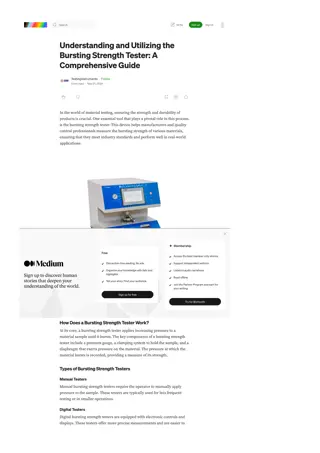Effective Strength Training Tips for High School Sprinters
Strength training plays a crucial role in the performance of high school sprinters. Coach JJ Riese from Colorado State University shares insights on structuring practices, asking important questions, and developing a philosophy for effective resistance training. The guide also covers various types of resistance exercises and practical tips for enhancing sprinting capabilities.
Download Presentation

Please find below an Image/Link to download the presentation.
The content on the website is provided AS IS for your information and personal use only. It may not be sold, licensed, or shared on other websites without obtaining consent from the author. Download presentation by click this link. If you encounter any issues during the download, it is possible that the publisher has removed the file from their server.
E N D
Presentation Transcript
Strength Training for High School Sprinters JJ Riese MS CSCS SPRINTS, HURDLES, AND RELAYS COACH COLORADO STATE UNIVERSITY jjriese@colostate.edu (315) 480-8932
Questions to Ask How long is your season? What are your facilities? What is important long term and what is important today? How am I going to get from where we are to where I want to go? Do you have indoor track team or can you start an indoor track team? Can you start a lifting club for the winter? What is your relationship with the other sport coaches? What are weather restrictions and contingency plans? Are my plans flexible? Practice time limits? How do I scale the practice to experience and ability? Staff size and skill set? How am I tracking things?
Structuring Practice 1. Prioritize goals 1. Season 2. Training Block, ex. month 3. Training Cycle, ex. Week/10days 4. Session, ex. Day 2. Practice Logistics 1. Keep things as simple as possible but not more so 2. Some athletes are more equal than others 3. Everything is scalable
My Philosophy 1. Resistance training should be done the same days as your high intensity track work AFTER the track work (if possible) 1. Give 48 hours recovery when possible between high intensity days 2. Resistance Training does not necessarily mean the weight room 3. Weight room is supplementary and general in nature 4. Do you NEED to lift? No. 1. Do you need resistance training? Yes. 5. Similar ranges of motion and muscle actions should be addressed within a session
Types of Resistance Examples 1. Body Weight 2. Hills 3. Towing Sleds/Tires 4. Weight vests 4lbs men, 2lbs women 5. Plyos, especially drops 6. Bungees 7. Medballs/shot puts 8. Barbells/Dumbbells
Make a Medball 1. 2. 3. 4. 5. 6. old soccer/basketball razor blade sand/dirt funnel scale duct tape
Themes Acceleration: Heaviest day, biggest ROM Plyos: seated box ups, bounds, skips for distance, broad jumps Throws: from the ground Lifts: deep squats, bench, Olympics from ground Max Velocity: Medium loads, reactive Plyos: Box ups, pogos, skips for height Throws: from hang with 1 or 2 hops Lifts: Squat jumps, hang Olympics Special/Speed Endurance: Lightest loads, basic actions Plyos: rudimentary jumps Throws: from hang, lighter than usual Lifts: Jerk, pre-hab, OH squat This is not dogma, you can mix/combine days
Weight Room Selection My Plan Olympic Hip Extension Upper Push Upper Pull Typically use exercise selection to modulate load Four weeks before conference Hip Extension comes out Athletes feel lighter and fresher
Pushers vs. Pullers Survey the team on their favorite lifts Might be may be a lower body pusher but upper body puller May give you insight on how to cue them on the track Pusher Puller Squat Deadlift Bench Pullups Jerk Clean/Snatch
Body Type Differences Broad vs. Narrow Short vs. Tall Long Levers vs. Short Levers Wiry vs. Muscular Lean vs. Thick Boys vs. Girls
Progression Examples Unilateral (Step Up) to Bilateral (Squat) to Unilateral (Lunge) Higher reps (12-10) to lower reps (5-1) to fast reps (30-50% 1RM) Simple (RDL) to Complex (Full Clean) More frequent (3-4 x a week) to less frequent (1-2 x a week) Be mindful when things change to avoid soreness and to see how lifts effect track work. There is no magic time span on when to progress .can you do both concurrently?
Scalable Example RDL 2-4 sets of 6 SUPERSET with DB Bench Fr: 2 sets So: 3 sets Jr-Sr: 4 sets
Questions? jjriese@colostate.edu























